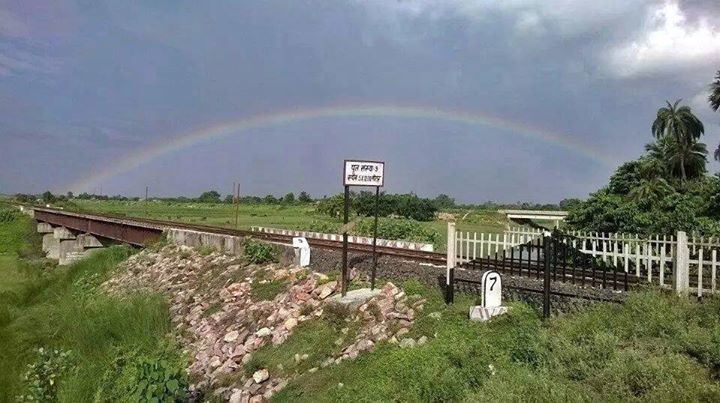Status Operational Termini MuzaffarpurGorakhpur | ||
 | ||
Opened Muzaffarpur-Hajipur (in 1884), Muzaffarpur-Sitamarhi (in 2013) | ||
The Muzaffarpur–Gorakhpur line (via Hajipur, Raxaul and Sitamarhi) is a set of three lines connecting Muzaffarpur in the Indian state of Bihar with Gorakhpur in Uttar Pradesh. The lines run in an east–west direction between the Gandak and India–Nepal border, covering North Bihar west of the Kosi river and eastern Uttar Pradesh. The southernmost of the three lines connects via Hajipur Junction, Sonpur Junction and Chhapra. The central line connects via Motihari (also to Raxaul) and Sugauli. The northern line connects via Sitamarhi (newly constructed single diesel BG) and Raxaul. The lines have interconnections between them and the northern line has extensions to places near the India–Nepal border.
Contents
History
Railway lines in the area were pioneered by Tirhut Railway and the Bengal and North Western Railway lines in the 19th century. In his book The Indian Empire, Its People, History and Products' (first published in 1886) W.W.Hunter, says "The Tirhut State Railway with its various branches intersects North Bihar and is intended to extend to the Nepal frontier on one side and to Assam on the other."
The Barauni–Bachhwara line was opened in 1883. The Bachhwara-Bagaha line was developed in stages between 1883 and 1907. The 51 km (32 mi) long Hajipur-Muzaffarpur line was opened in 1884. The 270 km (168 mi) long Tirhut main line from Katihar to Sonpur was developed in stages between 1887 and 1901.
The 105 km (65 mi) long Chhapra–Thawe line was opened in 1910. The 320 km (199 mi) long Chhapra–Allahabad line was developed between 1891 and 1913. The Maharajganj branch line was opened in 1907. The Siwan–Kaptanganj line was opened between 1907 and 1913. The 127 km (79 mi) long Bhatni–Varanasi Chord was opened between 1896 and 1899.
Electrification
The electrification work was completed in December 2014 itself. But the first passenger train to run with an electric locomotive was Maurya Express w.e.f. 23 November 2015.
As of today, trains running with electric traction on this route are 1. 15027/15028 GKP-HTE Maurya Express with a WAP4(MGS)- Full distance 2. 18181/18182 CPR-TATA Express with a WAP4 (Unknown)- Full distance 3. 12553/12554 BJU-NDLS Vaishali express with a WAP4(CNB)- Full distance 4. 11123/11124 BJU-GWL Mail - Full distance 5. 15203/15204 BJU-LJN Express - Full distance 6. 12511/12512 Rapti Sagar Express 7. 12565/12566 Bihar Sampark Kranti Express between SPJ-NDLS from 10.9.16
Gauge conversion
In 1999 the Railway Convention Committee noted that broad gauge conversion of such lines as the Allahabad–Varanasi–Chhapra-Sonepur–Bachhwara section or the Muzaffarpur–Sugauli–Raxaul section created most of the desired alternative routes to avoid congestion of the main trunk routes and generated additional capacity.
Gauge conversion of the 268 km long Jainagar–Darbhanga–Narkatiaganj line that was started in 2011 was completed to Raxaul in February 2014 but the Raxaul to Narkatiaganj section remained to be converted from metre gauge. Conversion of Sakri–Laukaha Bazar–Nirmali line from metre to broad gauge had not started by March 2014.
Sections
The 59 km long existing Chhapra–Hajipur line was being doubled.
